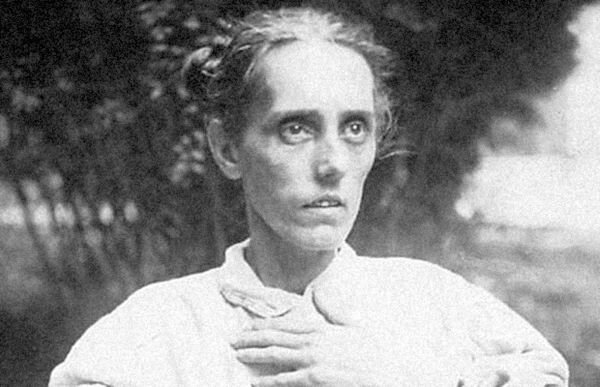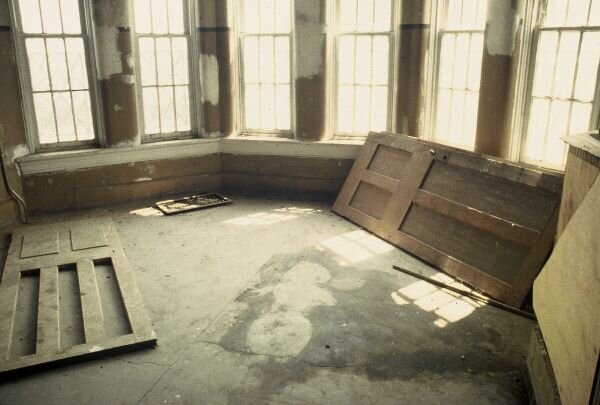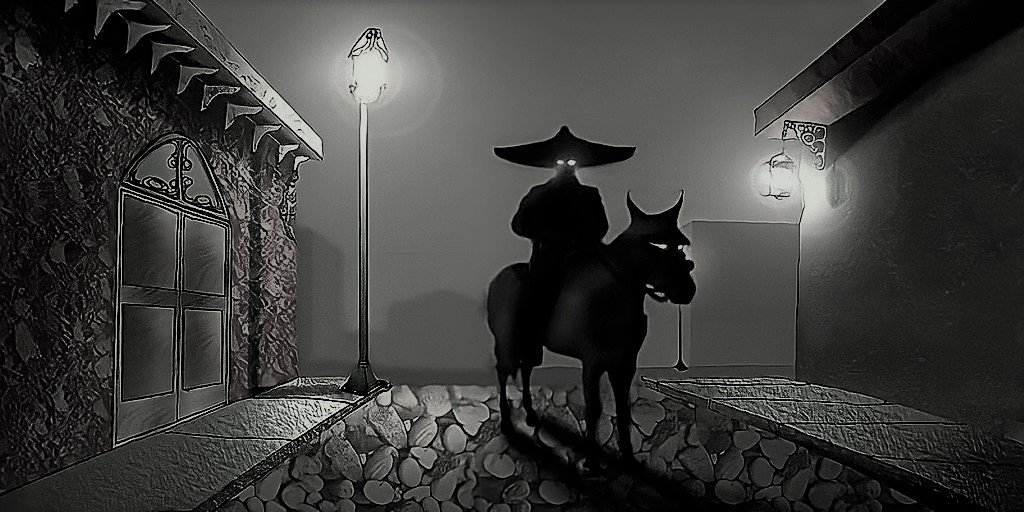The Lost Lady at the Haunted Athens Asylum, Ohio
On December 2nd, 1978, alarms went off at the Athens Mental Health and Development Center, police arrived as the staff gathered to draw up a plan to find a missing patient, Margaret Shilling. It would be six long weeks in the grueling winter before she was found, her body frozen in the attic of the same asylum where she was lost.
But Margaret’s story wouldn’t be lost to history for when she was moved, a clear outline of her body was left in the concrete underneath. Try as they might, no one was able to remove the stain her body left. Where Margaret spent the last six weeks of her life would be ingrained in the building forever.
After the asylum closed stories began to spread that the outline of her body wasn’t the only thing the building had entrapped within its walls and now Margaret would be doomed to wander the halls with the other spirits living in the Athens Asylum.
PART 1 - The Asylum Opens
History has not been kind to those suffering from mental illness, during the middle ages many believed those suffering were beyond help or reason. Evil spirits were often thought to be the cause with a popular solution being trephination, a procedure where a piece of the patient's skull was removed in order to let the bad spirits out. It was not uncommon for patients to die from hemorrhaging or infection, others who lived now had to add brain injury to their list of ailments.
Exorcisms became common as the devil and demons were also thought to be behind such quote wicked illnesses, those that responded well to the treatment would get to live, and those that didn’t would be thought too far gone and executed, burned at the stake, or hanged, sometimes accused as witches.
During the Enlightenment the idea of mental illness being a by-product of the supernatural began to fall out of favor, unfortunately, it was replaced by the thought that those suffering were valued less than the rest of society. Many were thrown into hospitals and chained to walls or beds in less than sanitary conditions. Those who had committed crimes were tossed into prisons and left to die without help.
Between the 17th and 19th centuries, the idea of hospitals solely dedicated to housing those considered mad or insane gained popularity. Here, doctors tried various forms of treatment, among those attempting music or talk therapy a growing number believed there was nothing that could be done to help those they called lunatics.
In the mid-19th century, the focus was placed on where to house those suffering, Doctor Thomas Story Kirkbride would develop a design for these asylums with the intention of providing natural sunlight and fresh air to patients. The buildings were spacious, extending outward from a central administration building. From above the building would have the appearance of a bat extending its wings.
The Athens Lunatic Asylum
After the United States Civil War, with many casualties and battles causing post-traumatic stress in the population, many new asylums were built using Kirkbride’s design. One of which was the 141-acre Athens Lunatic Asylum opening on January 9th, 1874. Within two years the asylum was renamed “The Athens Hospital for the Insane” and would go on to have several different names in the following 120 years.
From the outside the asylum would appear to be operating efficiently as intended, men and women were separated into different wings and would be taught skills to help in making the asylum as self-sufficient as possible.
Doctor Kirkbride believed an effective form of therapy was doing skilled labor out in the fresh air leading to the asylum having livestock, greenhouses, a dairy barn, and a steam plant to generate its own heat. The asylum grew from 141 acres to over a thousand.
But as the decades went on and the treatment of those with mental illness became more inhumane the asylum gained a new reputation. By the mid-20th century, the asylum was overcrowded, containing an occupancy over three times its intended amount with almost 2 thousand patients at any given time. Rumors began to spread of the understaffed asylum resorting to violence and torture to maintain order and dish out punishments.
Malpractice and Murder
Reports of malpractice and murder loomed over the asylum, yet many still admitted their suffering family members into its walls. Men, women, and children were thrown in and forgotten by their families.
Even when they died their bodies went unclaimed and their names were lost to history. The grounds contained three graveyards but due to budget cuts the stones contained only numbers until the 1940s, of the two thousand buried, three hundred are still unknown today.
Within the asylum, the treatments also reflected the inhuman punishments, over 200 transorbital lobotomies were performed in the asylum in just four years. The procedure involved inserting a long metal pick between the eyeball and eyelid of a patient until it reached the bone of the eye socket.
Then with a mallet, the pick would be pounded, breaking through the bone and allowing it to enter the frontal lobe of the patient’s brain. A sweeping motion with the pick would sever and destroy the frontal lobes, with some patients later experiencing pieces of their brain draining through their nose. All of this was done without anesthesia.
Although many patients survived the lobotomy, many lost memories and aspects of their personalities, some could no longer experience intense emotion, others were left unable to speak or move, and others eventually took their own lives.
With all the stories and rumors along with the changing understanding of mental illness in the 1950s, the asylum began to drop in patient numbers. For some time it appeared the history of the Athens Asylum would be overshadowed by the depravity of other mental asylums in the country, that is until one patient went missing in the winter of 1978.
PART 2 - The Story of The Lost Lady
Not much is known about Margaret Shilling prior to 1978, being a patient for some time at the Athens Asylum, she was known to be friendly but a loner. Often she would be found at the top of the stairs standing and waving at the staff and patients who walked by.
Margaret even had open privileges, meaning she was allowed to roam the grounds freely as long as she didn’t leave the asylum. So when several of the staff didn’t see her at her usual spot on the morning of December 2nd, 1978 no one sounded the alarm. But when dinner time rolled around and Margaret didn’t show up, the staff now knew they now had a missing patient.
Margaret Shilling
Within the hour the staff had alerted police and begun searching the thousand acres. By the next morning, the headlines told of the missing patient. Police conducted searches outside the grounds while the staff searched every room from the attic to the basement for Margaret.
Meanwhile, temperatures dropped as Ohio prepared for one of the coldest winters in its history.
Over the course of the next 6 weeks, snow and freezing temperatures hit the Athens area, and as much as thirty inches of snow forced the police to call off the search for Margaret, considering her an escaped patient in their book. On January 12th, 1979 when the staff at the asylum had just about given in to the same conclusion, a vile smell permeated through the buildings.
Following it, they were led back to an attic they had searched several times over the last 6 weeks always finding it empty. But this time in the center of the room, laying naked was the decomposing body of Margaret Shilling, next to her lay her clothes neatly folded into a pile.
Police were immediately called to the scene where they determined Margaret had somehow found herself stuck in the room at some point in the last six weeks. Being unable to escape and left without food or water in the freezing cold temperature she disrobed in an attempt to get as much of the heat of the sun on her body as possible.
Although this was a flimsy explanation for the circumstances, the public at large accepted it as the room where she was found, was in the middle of the construction and had to be kept propped open in order to prevent it from locking. Many believed she somehow found her way in, got stuck, and with construction stopping during the winter, no one found her. The staff was also considered to have neglected to look in the room as it was thought she wouldn’t have wandered in to begin with.
The Curse of The Stain
But Margaret Shilling's story wouldn’t end there. When her body was moved the staff discovered a clear outline had embedded itself into the concrete. A crew worked for several hours to remove the stain and try as they might with all different types of cleaners, the stain and the last moments of Margaret Shilling's life remained.
As the years went on and the asylum changed, closing officially in 1993 one of the only things that remained was the outline of Margaret’s body. The land was donated to Ohio University and eventually renamed the “Ridges” in 2001 but almost immediately after Margaret Shilling’s death whispers of hauntings and talks of curses began to spread.
Students of the nearby Ohio University claimed to have seen glimpses of a woman staring down from the attic window where Margaret was found. Others said they saw the shadowy figure of a woman attempting to escape the room giving looks of despair as she realized she could never leave. Stories of the staff at the asylum having seen Margaret standing on her usual spot at the staircase smiling, and waving before vanishing were passed around.
Stories of a curse imprinted in the outline of Margaret’s body also drew students' attention. Many claimed the grief she experienced of her impending death caused the stain to become cursed, just touching it would drive you insane in a matter of days. Groups of students would dare each other to spend the night in the attic, but only one, Debbie Southall, agreed.
The “Stain”
On Halloween night 1979, Debbie gained entry to where Margaret died and even touched the stain left by her body. The next day something came over Debbie, her personality changed dramatically becoming distant and enraged at the slightest provocation. Her friend Susan Herrington later claimed to have witnessed items moving around on their own and an inhuman shadowy figure appearing to her and Debbie.
After this, Debbie became even more distant, locking herself in her room and refusing to come out for days at a time. After an especially long session locked away, Susan broke into her room only to find Debbie had taken her own life, her body decomposing leaving its own stain on the floor.
As the story of Debbie’s possession spread, others started to see more spirits inhabiting the old asylum. Today many claim to see strange lights and figures roaming the graveyards along with hearing disembodied voices coming from the empty halls and terrifyingly the sounds of patients screaming in pain echoing at night.
But by taking a closer look at the stories surrounding the patients at the Athens Asylum and the curse of Margaret Shilling we can start to reveal the true stories underneath.
PART 3 - The Truth of the Lost Lady
The records for the patients who stayed at the Athens Asylum are legally sealed for fifty years after their deaths meaning we can’t know exactly why Margaret Shilling was in the asylum or the finer details of her death.
Many sources state Margaret was deaf alluding to the reason why she didn’t hear anyone calling for her while she was missing, others claim Margaret didn’t want to be found. Based on newspaper articles reporting her death, we know neither of these are true. What we do know is Margaret was fifty-three at the time of her death, married, had a son, and had been at the asylum for some time.
Just prior to her death, there was construction going on but the construction was not just in the one room where she was found but in an entire ward. The complex at the time included 78 buildings in total, and Margaret found herself locked in not just a faraway room but in an entire building.
The staff at the asylum don’t know why Margaret entered that building of the asylum but she did have privileges to go anywhere in the 1,000-acre facility as long as she returned by curfew. This meant once she entered that room and accidentally locked herself in, no one was going to be able to hear her screams for help.
Because she wasn’t a dangerous patient and wasn’t considered high-risk, many of the staff and police believed she had simply left the asylum for good to be with her family, something that wasn’t uncommon for some low-risk patients to do at the time.
Paradoxical Undressing
When construction restarted in the building in January, a construction worker found her in the room, naked, dead, and decomposing. The coroner determined Margaret’s cause of death was heart failure due to having to endure the freezing temperatures which helps explain why Margaret was found naked. A common but bizarre effect of hypothermia is called paradoxical undressing.
When you’re in cold temperatures the blood vessels in your body contract in an attempt to prevent loss of heat in your core as that is the most important part of your body needed for survival. It’s why your hands and feet get cold first before the rest of your body. In cases of extreme hypothermia, those muscles contracting your blood vessels fatigue and fail causing warm blood to rush to other parts of your body.
The person experiencing this feels a hot flash as if they were burning from the inside, with the confusion created by hypothermia, the victim believes undressing is the only solution. It’s believed Margaret Shilling experienced paradoxical undressing shortly before dying from the extreme cold.
After she passed, she laid in a position where the sunshine covered her entirely, the heat amplified by the glass caused her body to decompose onto the exposed concrete leaving a perfect outline of her body. A 2008 microscopic analysis of the stain published in the Journal of Forensic Sciences found the type of cleaner used in an attempt to remove the stain actually contributed to the stain being etched permanently into the concrete.
The Truth About Debbie Southall
As for the story of possession of Debbie Southall after touching the stain, that story can be traced back to an actual claim from Debbie Southall and Susan Herrington wherein they claimed to see objects moving around while at Ohio University.
But in tracing the story through newspaper articles, it turns out that the first time it was reported, the story did not include anything about Margaret Shilling or the stain, especially since the story first appeared in 1976, years before Margaret died.
Throughout the years those at and surrounding Ohio University heard the stories of Margaret Shilling and the story of Debbie Southall mixing them together as the decades passed, creating a false link between a tragedy and a ghost story. In reality, none of the stories of ghosts, shadowy figures, or the spirit of Margaret Shilling appearing in the building appear to be true.
Along with the common trope of haunted asylums, the stories stuck easily and helped create this aura of a haunted terrifying place. Unfortunately, these stories end up ignoring or downplaying the real horror that occurred in these asylums.
The treatment of patients, bound, gagged, shackled, and tortured along with the prevalent use of inhumane procedures like lobotomies is the true terror that haunts the halls of the former Athens Asylum.














